Landscape Plugs™
Caltha palustrismarsh marigold
Native to northern states and Canada, this little beauty is at home at pond's edge or along a stream. It is clumping by nature, but can seed in to form a dense groundcover in a consistently moist site. In early spring, hundreds of bright yellow buttercup flowers dot the green carpet of cordate foliage. Deer usually leave this alone! Found in marshes, swamps, and wet meadows from North Carolina to Alaska. [
More Info
]
|
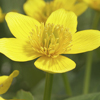
|
Carex 'Silver Sceptre'Japanese sedge
This beautiful selection has narrow (1/4") leaves with white margins, giving it a very fine texture overall. Rhizomatous, forming thick silvery clumps. A bright addition to the shade palette! [
More Info
]
|
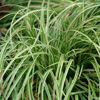
|
Carex amphibolacreek sedge
Carex amphibola is a widely adaptable native sedge naturally occurring from Texas to Quebec and Georgia to New Hampshire. Its forms a compact and semi-erect mound. Proven to be semi evergreen (zone 6b) and prefers deciduous shade in upland or even floodplain conditions; easily adapts to fine or medium textured soils. Creek sedge lends itself well to native shade gardens, along wood paths or as a slope stabilizer. It is a vigorous clump former with shiny, narrow green foliage 1/8" wide by up to 12" long. C. amphibola is an excellent companion for Phlox divaricata, Chrysogonum and Polygonatum...among others! [
More Info
]
|
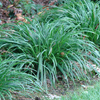
|

Carex appalachicaAppalachian sedge
This lovely sedge is native to the dry woods of eastern North America. Its fine texture and fountaining habit make it a lovely groundcover in dry shady sites, even in the root zone of trees. Its tidy clumping habit makes it a perfect feature in a container, rock or stump, or in a border planting along a walkway. [
More Info
]
|
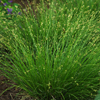
|
Carex cherokeensisCherokee sedge
Carex cherokeensis is a native sedge with a soft-medium texture. It prefers moist conditions but is adaptive. Grows in part shade but tolerates full sun in the morning. The inflorescence has been noted as insignificant but, we like the little wispy spikes that add a interest in the spring. [
More Info
]
|
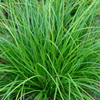
|
Carex eburneabristleleaf sedge
A wonderful naturalizer, Carex eburnea is the ideal native groundcover for the woodland or rock garden. Petite colonies of 6-8 inch long soft, thread-like foliage takes on a spherical shape as inconspicuous whitish-green flower spikes appear in early spring. [
More Info
]
|
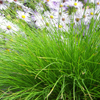
|
Carex flaccospermablue wood sedge
A beautiful native groundcover with striking glaucus blue foliage, Blue wood sedge is easy to grow and evergreen in warmer zones, though it benefits from a late winter cut back. Early spring flowers are slender and form interesting seed heads. Forms tidy clumps and spreads by seed. [
More Info
]
|
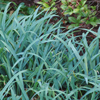
|

Carex laxiculmus Bunny Blue® 'HOBB'Bunny Blue sedge
Bunny Blue® is a low growing, evergreen, native sedge with silver-blue foliage. Use as a ground cover or specimen plant for moist to average shady areas. [
More Info
]
|
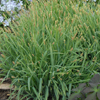
|
Carex morrowii 'Ice Dance'Japanese sedge
A bright groundcover for a shady spot, 'Ice Dance' has long shiny leaves trimmed in bright white. It spreads slowly to fill in and make a tidy cover that discourages weeds. Deer and disease resistant, it is long-lasting and easy to grow! [
More Info
]
|
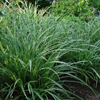
|
Carex muskingumensisMuskingum sedge
A fine-textured sedge that resembles palm fronds? How strange! Naturally occuring in moist habitats such as low, swampy woods and wet meadows, this native cool-season sedge adds textural interest to any planting. [
More Info
]
|
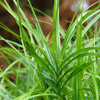
|
Carex oshimensis 'Evergold'golden sedge
Fountains of narrow leaves with broad cream stripes adorn this clump-forming, shade-loving grass. 'Evergold' is lovely spilling over into a path or as an architectural feature in a container or window box. Deer and disease resistant, it is long-lasting and easy to grow! [
More Info
]
|
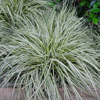
|

Carex pensylvanicaoak sedge
With its tough disposition and spreading habit, this native sedge makes an excellent shade groundcover. Fine texture and fountaining habit give this sedge a soft appearance that is lovely as an underplanting for bolder shade perennials or on its own as a shade lawn. Great in containers too! Easy to grow. Happiest in the company of oaks, but who isn't? [
More Info
]
|
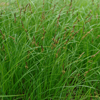
|
Carex plantagineaseersucker sedge
Shiny deep green leaves are unusually broad (to 1 1/8") and puckered like Christmas ribbon. An excellent, mostly evergreen (the basal foliage overwinters) groundcover for average to moist shade, provides unique texture. Flowers occur in early to mid-spring, thin and black-tipped, not especially showy. Found in moist woods from Canada to Alabama.
[
More Info
]
|
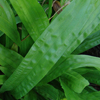
|
Carex radiataeastern star sedge
An attractive native sedge that forms dense tufts of foliage reaching 1–2' in height with an equal spread. Inflorescences range from 1-3" in length; blooming late spring. Very adaptable, dappled sunlight to medium shade, moist to mesic conditions, and a rich loamy soil with abundant organic matter. Incorporate with native ferns or spring ephemerals like Mertensia virginica. Seeds are enjoyed by various songbirds. [
More Info
]
|
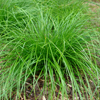
|
Carex strictatussock sedge
A wetland native that forms dense tussocks of straw-colored leaves at the base with bright green new growth emerging from the top. Spreads via rhizomes. Found in wet meadows. Emergent aquatic. [
More Info
]
|
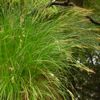
|
Carex vulpinoideafox sedge
One of the most widespread species of Carex in North America, growing in wet meadows, prairies, swamps and marshes. The seedheads mature in late summer and resemble fox tails, hence the common name. [
More Info
]
|
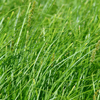
|
Caryopteris × clandonensis 'Dark Knight'blue mist shrub, bluebeard
Blue mist shrub is aptly named as its gray-green foliage is shrouded in a cloud of blue from mid to late summer. It is a well-behaved garden plant that is very attractive to butterflies. 'Dark Knight' has deep purple blue flowers closely spaced on long stems. [
More Info
]
|

|

Chasmanthium latifoliumnorthern sea oats
A versatile native grass with bamboo-like foliage and delightful nodding seed heads that rustle in the breeze from late summer to winter. It grows in most sites and is a quite vigorous groundcover when given consistent moisture and sun. It is better behaved in average garden conditions and in shade. A unique cut flower in fresh or dry arrangements. [
More Info
]
|
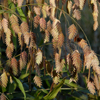
|

Chelone glabraturtlehead
Spikes of elegant white flowers top shiny green foliage in late summer and early fall. Grows best in moist meadows, stream banks, and swamps. Favorite breeding site for the Baltimore Checkerspot Butterfly. [
More Info
]
|
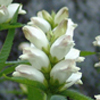
|
Chelone lyonii 'Hot Lips'turtlehead
Lustrous, deep green foliage is topped in August and September with rose pink, turtle-head-shaped flowers. Red stems persist most of the season. Bronze green early season growth is another distinctive feature. [
More Info
]
|
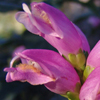
|
Chrysogonum virginianum var. australegreen and gold
One of our favorite native groundcovers for the woodland garden. Yellow daisy-like flowers cover 6" evergreen foliage in spring. Rosettes of leaves slowly spread stoloniferously. Looks great with columbine and Virginia bluebells. This golden star is very similar to Chrysogonum virginianum 'Allen Bush', but has shorter stems and stolons that spread above ground. With a compact and low growing form, this plant has deep, shiny green foliage and golden, star shaped flowers. [
More Info
]
|
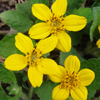
|

Coreopsis verticillatawhorled tickseed
This hardy species is a delightful and tough landscape solution. Taller and more vigorous than 'Moonbeam' or 'Zagreb', it has bright yellow flowers for 8 weeks or more, from late May to early August and often later. Drought tolerant and easy to grow in a garden or along the roadside. [
More Info
]
|
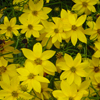
|


